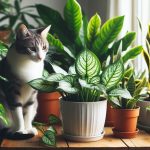Are Black Eyed Susans Toxic to Cats? Black Eyed Susans make a beautiful addition to any garden. but many pet owners question whether they pose a threat to cats. This comprehensive guide explores the history, identification, and significance of Black Eyed Susans. We will also address common misconceptions about their toxicity to cats. and provide essential tips for keeping your feline friends safe around these vibrant flowers. Let’s delve into the truth about Black Eyed Susans and their relationship with our beloved cats.
The History of Black Eyed Susans
Black Eyed Susans, scientifically known as Rudbeckia hirta. Are native to North America and have a rich history dating back to the early days of the continent. Here are some key points to consider about the history of Black Eyed Susans:
Native American Use: Native American tribes, such as the Cherokee, used Black Eyed Susans for various medicinal purposes, including treating colds, flu, and infected wounds. They also used the plant to soothe snakebites due to its perceived healing properties.
Colonial Era: The plant became a symbol of the new world and was brought to Europe in the 18th century. Its popularity grew, and it was eventually cultivated in European gardens.
Cultural Significance: Black Eyed Susans hold cultural significance for many Native American tribes and are often used in traditional ceremonies and decorations. The flower’s distinct appearance and resilience have made it a symbol of strength and endurance.
Horticultural Impact: Over time, Black Eyed Susans have become a beloved addition to gardens and landscapes, admired for their vibrant yellow petals and dark centers. They have also been extensively used in hybridization to create a wide range of cultivars, further expanding their presence in horticulture.
The history of Black Eyed Susans is a testament to their enduring appeal and significance, both in nature and culture. Despite their widespread popularity. it’s essential to understand their impact on the environment and the potential risks they may pose, particularly concerning their interaction with pets like cats.
In the next section. We will delve into the potential risks associated with Black Eyed Susans and their toxicity to cats.
Identification of Black Eyed Susans
Black Eyed Susans, also known as Rudbeckia hirta, are striking wildflowers that are easily identifiable by their distinct features. Here’s how to recognize these beautiful plants:
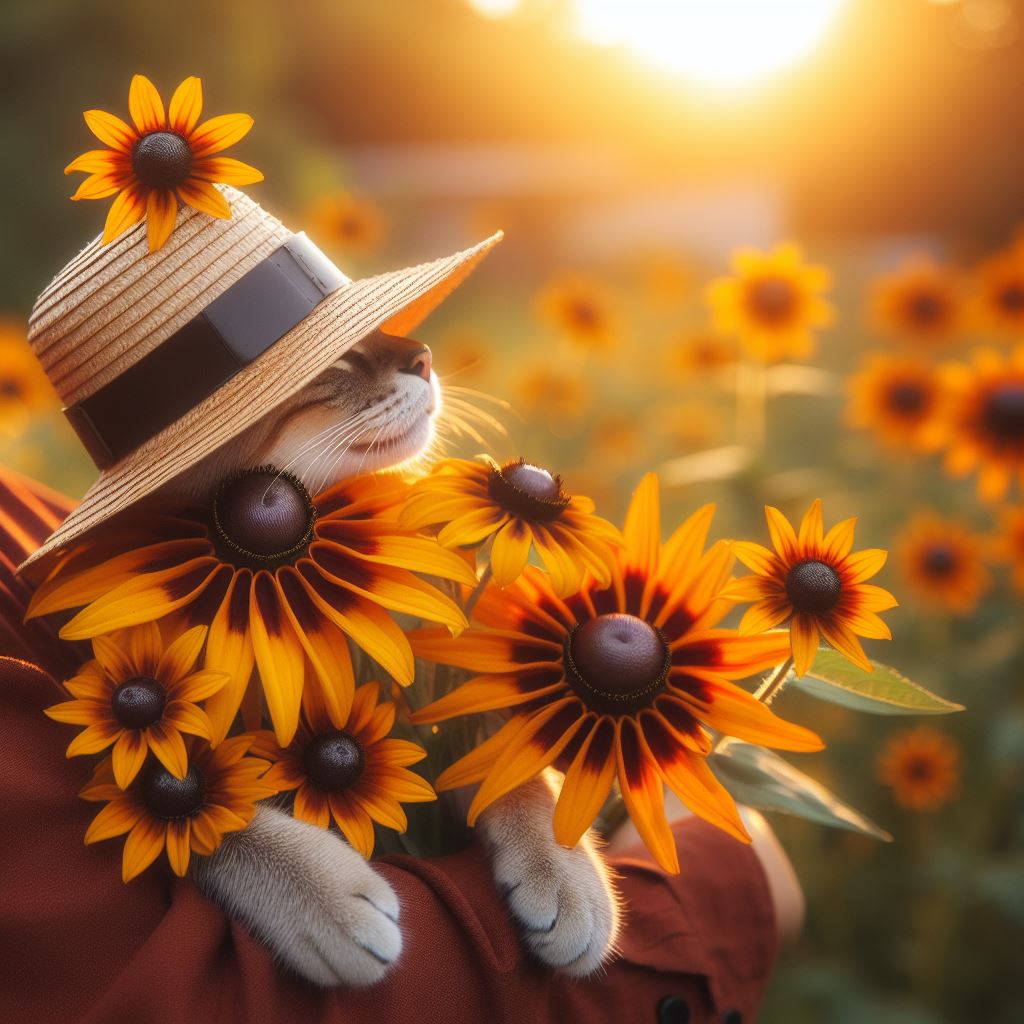
Physical Appearance:
- Black Eyed Susans typically have golden yellow petals with a dark brown or black center, resembling a “black eye.” The petals surround a raised central disk, giving them a daisy-like appearance.
- Their leaves are hairy and lance-shaped, growing alternately along the stem. The plant can reach a height of 2 to 3 feet, making it a standout feature in any garden.
Blooming Season:
- These perennials are known for their long blooming season, which typically lasts from early summer to fall. Their vibrant colors make them a popular choice for adding visual appeal to gardens and landscapes.
Preferred Habitat:
- Black Eyed Susans thrive in sunny locations with well-drained soil. They are commonly found in meadows, prairies, and along roadsides. The plant’s adaptability also allows it to grow in a variety of soil types.
Distinctive Characteristics:
- One of the key distinguishing features of Black Eyed Susans is their attractiveness to pollinators, particularly bees and butterflies. Their nectar-rich flowers play a crucial role in supporting local ecosystems.
Remember that while these flowers. Can enhance the aesthetic appeal of your outdoor space. it’s important to be mindful of their potential impact on your pets. As we explore the relationship between Black Eyed Susans and cats. it’s essential to understand the risks. Associated with these captivating blooms.
Growing Black Eyed Susans in Your Garden
When it comes to cultivating Black Eyed Susans in your garden. There are several key factors to consider to ensure healthy growth. Here’s what you need to know:
Sunlight: Black Eyed Susans thrive in full sunlight, so it’s essential to plant them in an area where they can receive at least 6-8 hours of direct sunlight per day. This will promote robust flowering and vibrant blooms.
Soil: These resilient flowers prefer well-draining soil with a slightly acidic to neutral pH. Amending the soil with organic matter, such as compost, can enhance its fertility and drainage, providing an optimal environment for the plants to flourish.
Watering: While Black Eyed Susans are fairly drought-tolerant once established, consistent watering is crucial during the initial stages of growth. Avoid overwatering, as these plants are susceptible to root rot in waterlogged soil.
Spacing: Plant Black Eyed Susans about 12-18 inches apart to allow for adequate air circulation and prevent overcrowding, which can lead to disease and pest issues.
Maintenance: Deadheading spent blooms not only encourages continuous flowering but also prevents self-seeding, which can lead to the spread of the plant in unwanted areas of the garden.
By following these simple guidelines. You can enjoy a stunning display of Black Eyed Susans in your garden while creating a welcoming habitat for pollinators.
Remember, while tending to your garden, always be mindful of your pets’ safety, especially if you have cats. Understanding that Black Eyed Susans can be toxic to cats. it’s crucial to take necessary precautions to ensure a harmonious coexistence between your beloved feline and the beautiful flora.
The Importance of Black Eyed Susans for Pollinators
Black Eyed Susans play a crucial role in supporting pollinators and contributing to the ecosystem in various ways. Here’s why they are essential for the well-being of pollinators:
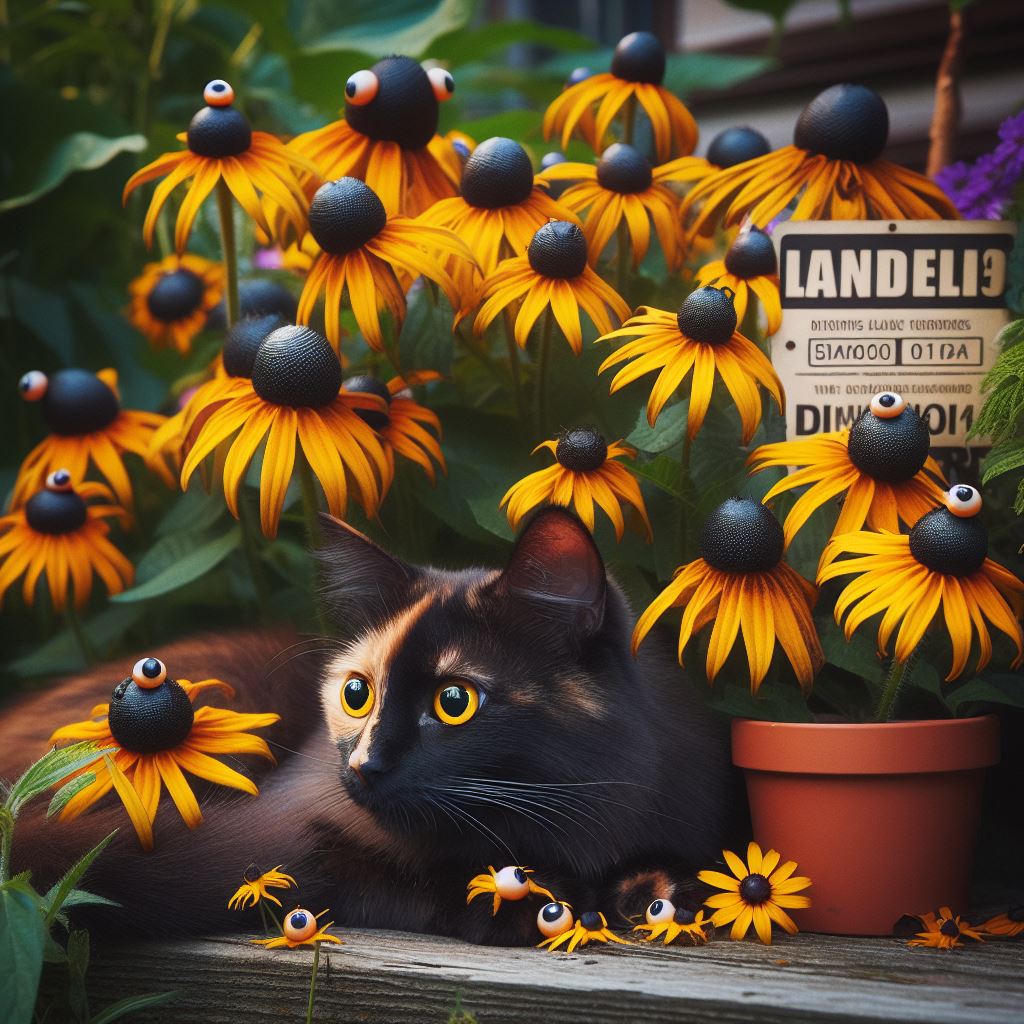
Nectar Source: Black Eyed Susans produce nectar, which serves as a vital food source for pollinators, including bees, butterflies, and hummingbirds. The abundance of nectar in these flowers helps sustain pollinator populations, aiding in their survival.
Pollen Production: These flowers also produce pollen, which is a key protein source for many pollinators. The pollen from Black Eyed Susans contributes to the nutritional requirements of bees and other insects, supporting their growth and reproduction.
Habitat and Shelter: Black Eyed Susans provide a habitat for various pollinators, offering shelter and nesting sites for solitary bees and other beneficial insects. This is particularly important in urban and suburban areas where natural habitats may be limited.
Biodiversity: By attracting a wide range of pollinators, Black Eyed Susans contribute to biodiversity in the garden and surrounding areas. A diverse population of pollinators is essential for maintaining healthy ecosystems and supporting other plant species.
Overall Ecosystem Health: The presence of Black Eyed Susans in an area can contribute to the overall health of the ecosystem by promoting pollinatio. and supporting the life cycles of various pollinators. This can have positive effects on other plant species and wildlife in the area.
Understanding the significance of Black Eyed Susans for pollinators highlights. The importance of incorporating these flowers into garden landscapes to support and nurture local pollinator populations.
Common Misconceptions About Black Eyed Susans
There are several misconceptions surrounding black eyed susans, especially when it comes to their interaction with cats. Let’s debunk some of the most common myths:
Myth 1: Black Eyed Susans are Toxic to Cats
Contrary to popular belief, black eyed susans are not toxic to cats. While it’s always advisable to exercise caution with plants around pets, black-eyed susans generally do not pose harm to felines. However, it’s still important to monitor your cat around any plant to avoid potential ingestion. and any resulting allergies or stomach upset.
Myth 2: Black Eyed Susans Require High Maintenance
Black eyed susans are actually quite low-maintenance. Once established, they are relatively drought-tolerant and can thrive in various soil types. They are also resistant to most pests and diseases, making them an excellent choice for a fuss-free garden.
Myth 3: Black Eyed Susans Only Come in Yellow
While the classic yellow black eyed susans are the most well-known, they actually come in a variety of colors including orange, gold, and bronze. This plant’s versatility can add a pop of color to any garden or floral arrangement.
By addressing these misconceptions. We can better understand the true nature of black eyed susans. Appreciate them for the beautiful and safe addition they can be to our surroundings.
How to Keep Your Cat Safe Around Black Eyed Susans
When it comes to ensuring the safety of your feline friends around black eyed susans. There are a few important measures to consider. While these vibrant flowers are a beautiful addition to your garden. it’s crucial to be mindful of the potential risks they pose to cats.
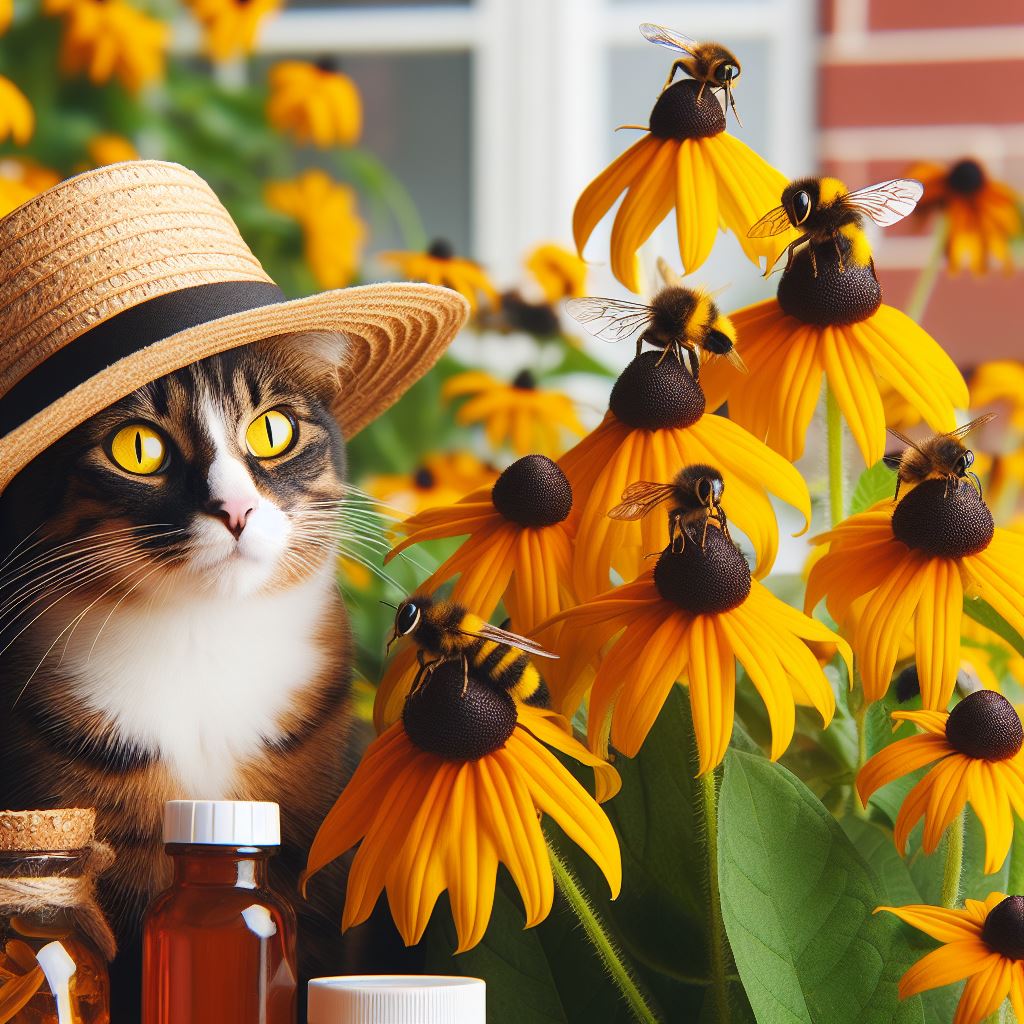
Tips for Keeping Your Cat Safe:
- Supervision: Keep a close eye on your cat when they are exploring the garden, especially if you have black eyed susans growing.
- Restricted Access: Consider creating a designated area in your garden where black eyed susans are not present, and encourage your cat to spend time there instead.
- Alternative Deterrents: Use natural deterrents around the black eyed susans. Such as citrus peels or diluted lemon juice, to discourage your cat from approaching them.
- Education: Take the time to educate yourself and your family about the potential dangers of black eyed susans to cats, and make sure everyone understands the importance of keeping the pets safe.
Signs of Ingestion and Action:
- Monitor Behavior: Watch out for any unusual behavior in your cat, such as vomiting. Lethargy, or loss of appetite, which could indicate ingestion of the flower.
- Consult a Vet: If you suspect that your cat has ingested black eyed susans or is showing any concerning symptoms, contact your vet immediately for professional guidance and advice.
By implementing these measures, you can enjoy the beauty of black eyed susans. In your garden while also prioritizing the safety and well-being of your beloved feline companions. Remember! a little precaution goes a long way in creating a safe. and harmonious environment for both your garden and your pets.
Remember, “black eyed susans toxic to cats” is an important point to always consider while creating a pet-friendly environment.
Benefits of Having Black Eyed Susans in Your Yard
Black eyed susans are not only visually stunning plants, but they also offer several benefits when incorporated into your yard. Here are the advantages of having these beautiful flowers in your outdoor space:
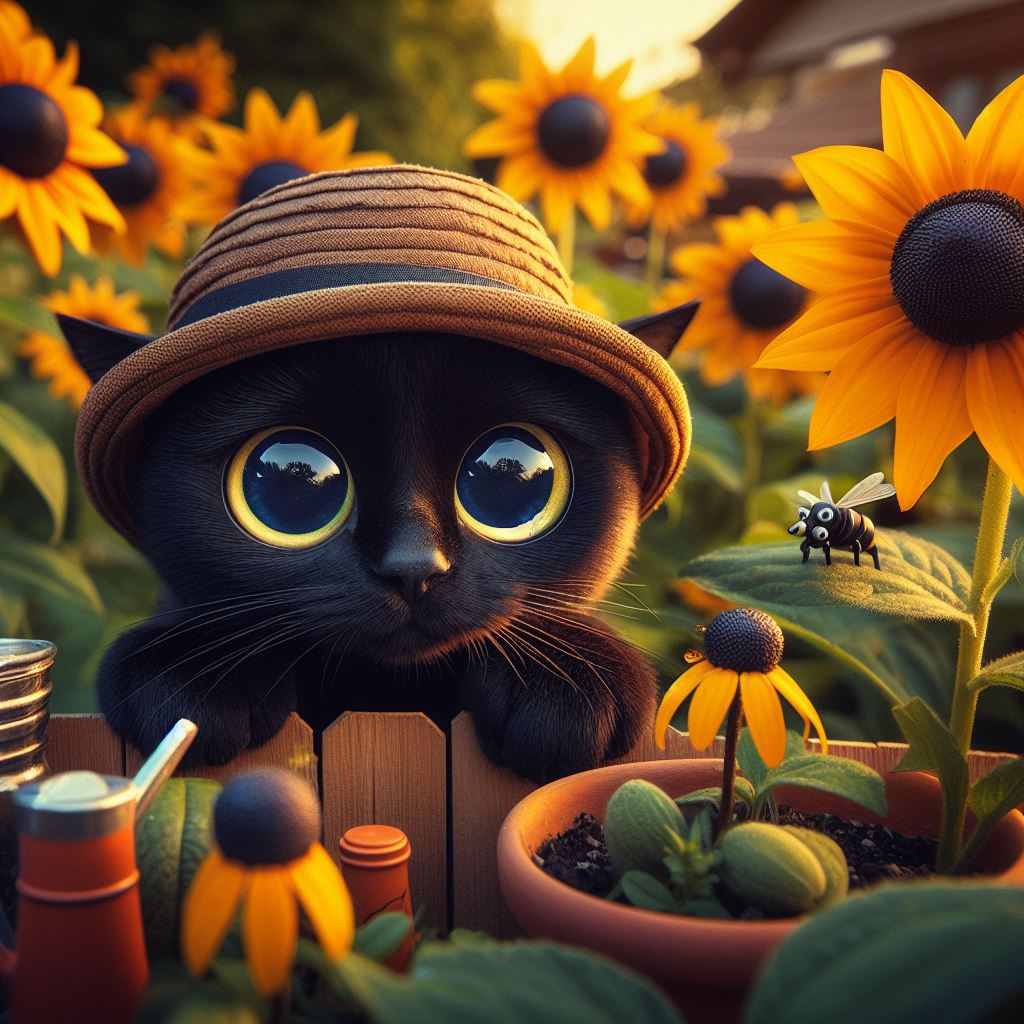
Attract Pollinators: Black eyed susans are excellent at attracting pollinators such as bees and butterflies. Their vibrant colors and nectar-rich flowers make them a favorite among pollinating insects, thereby promoting a healthy ecosystem in your yard.
Low Maintenance: These low-maintenance perennials are easy to grow and require minimal care. They can thrive in various soil types and are drought-tolerant once established, making them an ideal choice for busy gardeners.
Long Blooming Period: Black eyed susans have a long flowering period, often blooming from mid-summer to fall. This extended bloom time provides continuous visual interest in your yard and makes them a valuable addition to any garden landscape.
Erosion Control: Their dense root systems make black eyed susans effective at controlling soil erosion. Planting them on slopes or areas prone to erosion can help stabilize the soil and prevent loss of topsoil during heavy rainfall.
Cut Flower Potential: These vibrant blooms make for stunning cut flowers, adding a pop of color to your indoor floral arrangements. Their long vase life and ability to attract pollinators indoors make them a versatile choice for your flower vases.
Incorporating black eyed susans. into your yard not only enhances. its visual appeal but also contributes to the overall health of your garden ecosystem.
Carefully considering the placement of these charming flowers allows you to enjoy their benefits while safeguarding your furry feline friends. It’s important to note that black-eyed susans can be problematic, raising concerns about their potential toxicity to cats.
Black Eyed Susans and Their Role in Traditional Medicine
For centuries, Black Eyed Susans, or Rudbeckia hirta, have played a role in traditional medicine, showcasing potential health benefits. While renowned for their ornamental beauty and horticultural significance, these vibrant wildflowers also hold a significant place in herbal remedies. Here’s a closer look at the role of Black Eyed Susans in traditional medicine:
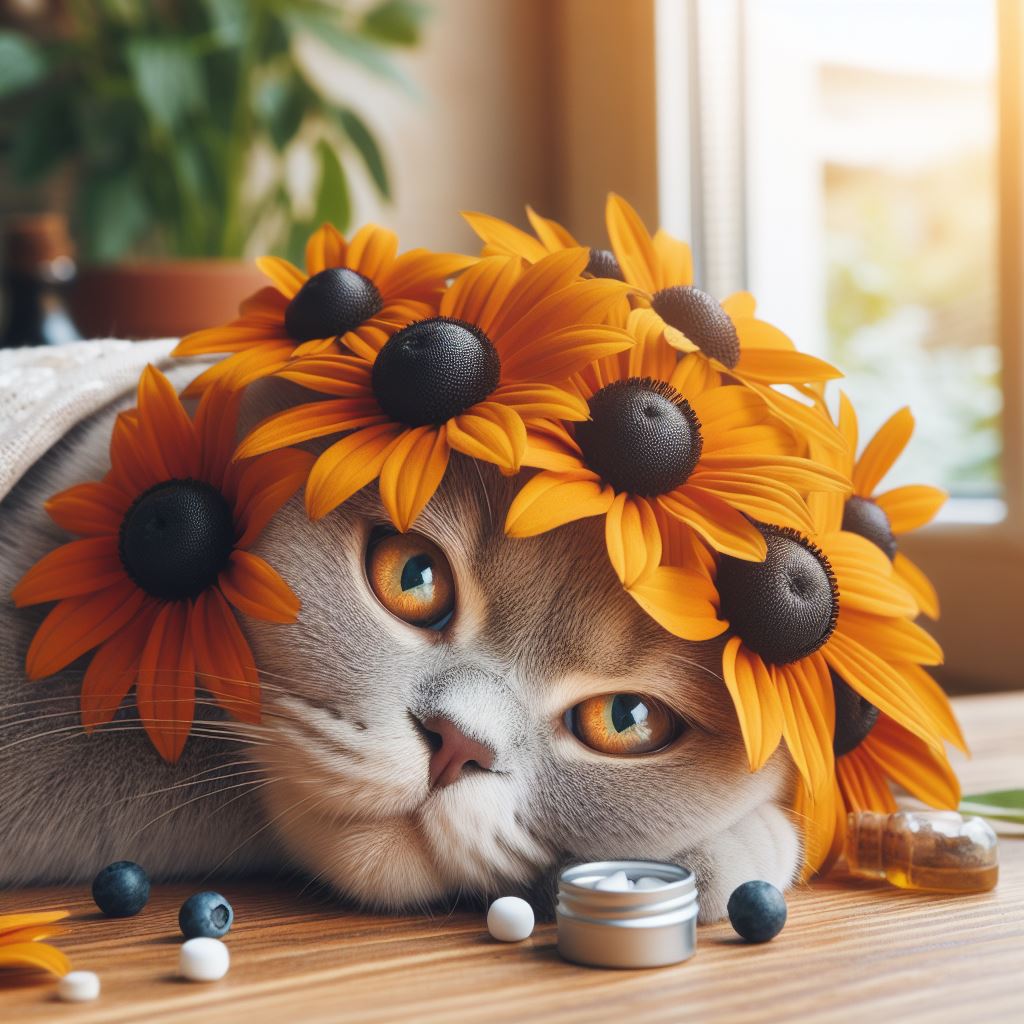
Medicinal Uses: In traditional medicine, Black Eyed Susans have been used to treat various ailments, including colds, flu, swelling, and snakebites. The roots of the plant are often utilized to create tinctures, teas, or poultices for these purposes.
Potential Health Benefits: The plant contains compounds such as flavonoids, essential oils, and polysaccharides, which are believed to possess anti-inflammatory, antioxidant, and immune-boosting properties. However, it’s essential to note that scientific research on the efficacy and safety of these uses is limited.
Caution with Pets: While Black Eyed Susans may have potential medicinal properties, it’s crucial to be mindful of their presence if you have cats. Black Eyed Susans are known to be toxic to cats if ingested. The plant contains compounds that can lead to gastrointestinal upset, lethargy, and other adverse effects in felines, underscoring the importance of keeping cats away from these flowers.
In conclusion, while Black Eyed Susans have a historical significance. in traditional medicine and may offer health benefits. it’s crucial to prioritize the safety of pets. especially cats, when incorporating these plants into your home or garden.
By being aware of the potential risks and benefits. individuals can make informed decisions regarding the use of Black Eyed Susans in traditional medicine practices.
Tips for Using Black Eyed Susans in Floral Arrangements
Are Black Eyed Susans Toxic to Cats?
Black Eyed Susans can add a charming and rustic touch to floral arrangements. but it’s crucial to handle them carefully, especially if you have cats in your home. Here are some tips for safely using Black Eyed Susans in your floral displays:
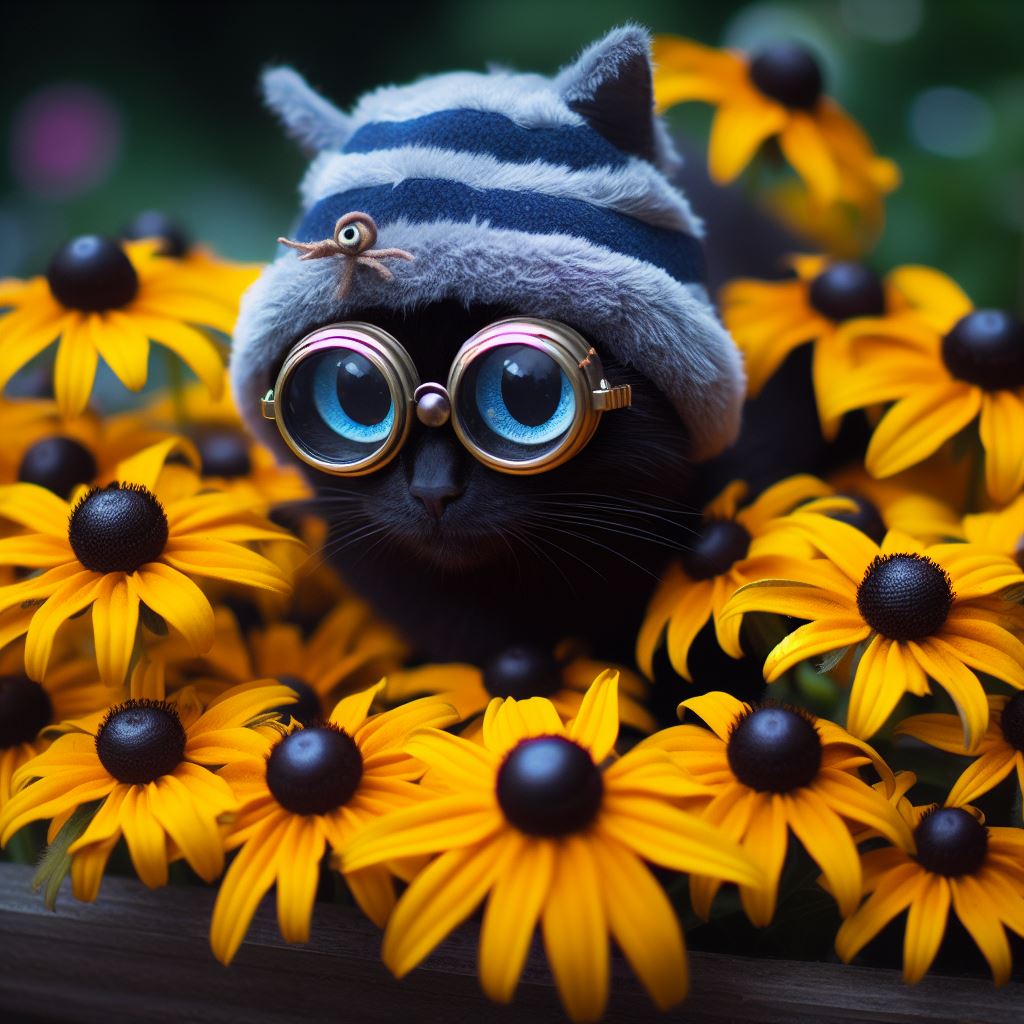
Placement: When creating floral arrangements, place the Black Eyed Susans in areas where your cat cannot reach them, such as high shelves or mantelpieces. This will prevent any accidental ingestion by your feline friend.
Avoid Foliage: Cats are particularly drawn to chewing on greenery, so consider using only the Black Eyed Susan blooms in your arrangements. This reduces the risk of your cat coming into contact with the toxic parts of the plant.
Monitor Your Cat: Keep an eye on your cat when you have Black Eyed Susans in your home. If you notice any interest in the flowers, consider relocating the arrangement to a cat-free zone.
Consult a Florist: If you’re unsure about which parts of the Black Eyed Susan are safe to use in floral arrangements, seek advice from a professional florist. They can provide guidance on how to handle the flowers to ensure the safety of your pets.
Remember, while Black Eyed Susans can be a beautiful addition to your home. it’s crucial to prioritize the well-being of your pets. By following these tips, you can enjoy their beauty while keeping your feline companions safe from any potential harm.
Essentially, it’s acceptable to include Black Eyed Susans in floral arrangements, as long as you take specific precautions to keep them out of reach of cats. Ensuring the safety of your pets.
The Future of Black Eyed Susans in Horticulture
Are Black Eyed Susans Toxic to Cats?
As horticulture continues to evolve, the future of black eyed susans looks promising. With a growing focus on sustainable and native plant species. Black eyed susans are likely to remain a popular choice for gardeners and landscapers. Here are some insights into the future of black eyed susans in horticulture:
Increased Popularity: As awareness about native plant species and pollinator-friendly gardens grows. The demand for black eyed susans is expected to rise. Their low maintenance and vibrant blooms make them an attractive option for various horticultural applications.
Breeding and Varietal Development: Horticulturists and botanists are actively working on breeding programs to develop new varieties of black eyed susans. These efforts aim to enhance traits such as color variations, disease resistance, and adaptability to different climates.
Environmental Benefits: Black eyed susans play a crucial role in ecological balance by supporting pollinators and beneficial insects. Their future in horticulture aligns with the broader mission of creating sustainable and biodiverse landscapes.
Integration in Urban Landscapes: With the increasing trend of urban gardening and green spaces, black eyed susans are likely to be integrated into more urban landscapes. Their ability to thrive in various soil conditions makes them well-suited for urban horticulture projects.
Educational Initiatives: The future of black eyed susans in horticulture also involves educational initiatives aimed at promoting their benefits. Educating homeowners, landscape architects, and horticulture enthusiasts about the value of these native plants can contribute to their sustained popularity.
Navigating the Beauty and Risks: Incorporating Black Eyed Susans into Pet-Friendly Environments
As horticultural practices adapt to environmental concerns and changing preferences. Black-eyed Susans are set to endure as a prominent feature in gardens, landscapes, and horticultural projects.
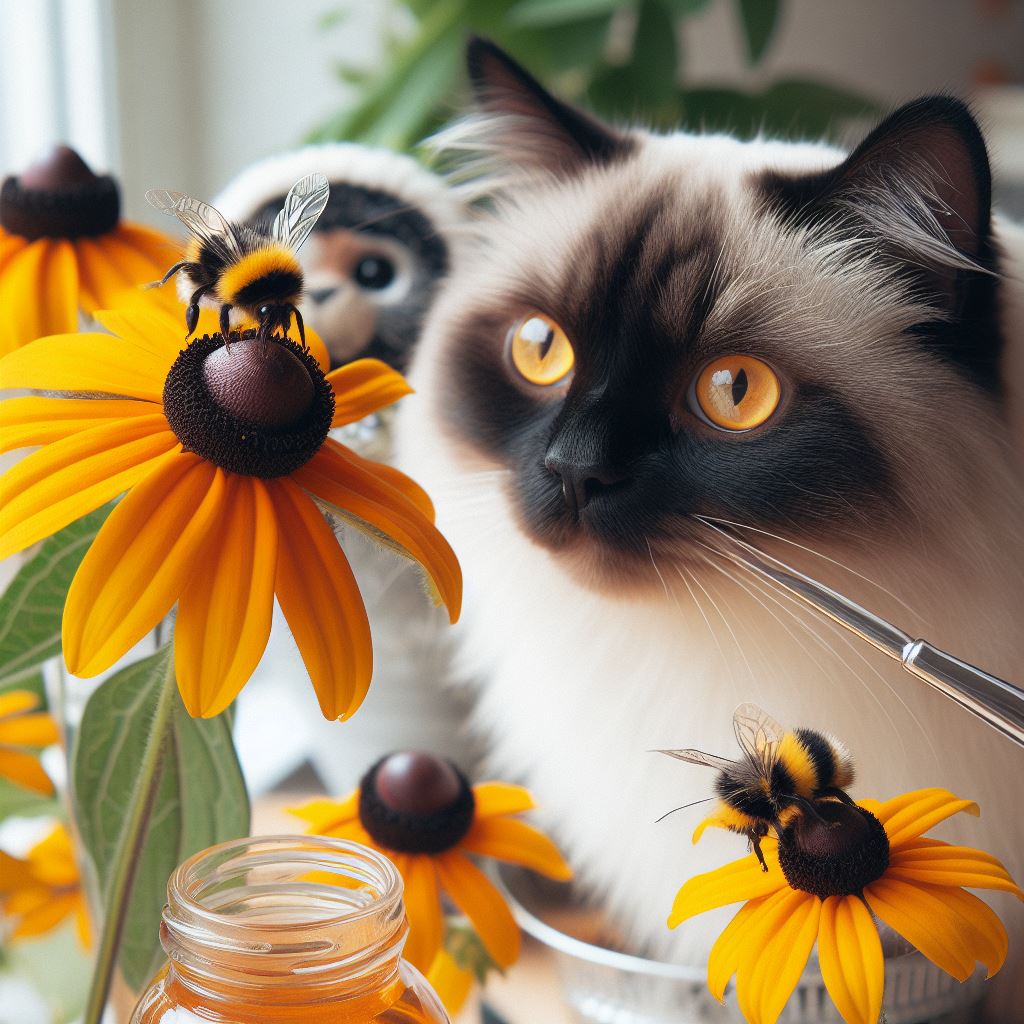
Remember, while black eyed susans are beneficial for the ecosystem. it’s crucial to be mindful of their potential toxicity to pets, including the fact that they can be toxic to cats. Careful consideration and planning are essential when incorporating these plants into environments where pets roam freely.
Frequently Asked Questions
Are black-eyed Susans toxic to cats?
Yes, black-eyed Susans are toxic to cats. They contain compounds that can cause symptoms such as vomiting, diarrhea, and skin irritation in cats when ingested or touched.
Can black-eyed Susans be harmful if a cat ingests them?
Yes, ingestion of black-eyed Susans can be harmful to cats. The toxins in these flowers can cause gastrointestinal upset, skin irritation, and other symptoms in cats. so it’s important to keep them away from cats and other pets.
What should I do if my cat eats black-eyed Susans?
If your cat eats black-eyed Susans, it’s important to seek veterinary care immediately. Your vet may induce vomiting or administer activated charcoal to help remove. The toxins from your cat’s system and provide supportive care to address any symptoms.
Are there safer alternatives to black-eyed Susans for cat-friendly gardens?
Indeed, instead of Black-Eyed Susans, consider using several cat-friendly plants in gardens. Consider options like catnip. Spider plants, and Boston ferns, which are safe for cats and can add beauty to your garden.
How can I protect my cat from black-eyed Susans in my yard?
To protect your cat from black-eyed Susans in your yard, consider creating barriers or fencing off areas where these flowers grow. You can also opt for cat-safe plants and create a separate area for cat-friendly activities to minimize their exposure to toxic flowers.
| Question | Answer |
|---|---|
| Are Black Eyed Susans Toxic to Cats? | Yes, Black Eyed Susans can be toxic to cats. |
| Toxic Components | The specific toxins in Black Eyed Susans may cause gastrointestinal upset, lethargy, or more severe symptoms in cats. |
| Symptoms of Poisoning | Watch for signs such as vomiting, diarrhea, loss of appetite, or unusual behavior in cats exposed to Black Eyed Susans. |
| Preventive Measures | Keep Black Eyed Susans out of reach, opt for cat-friendly plants, and consult a veterinarian if poisoning is suspected. |
| Alternatives in Gardens | Explore safe plant alternatives that enhance gardens without posing a threat to feline companions. |
| Further Veterinary Assistance | Seek immediate veterinary care if a cat ingests Black Eyed Susans or displays symptoms of poisoning. |
Note: Always consult with a veterinarian for personalized advice regarding pets and potential toxicity concerns.
DISCOVER THE ENCHANTING BEAUTY OF PURPLE HONEYSUCKLE
Read More Now..

